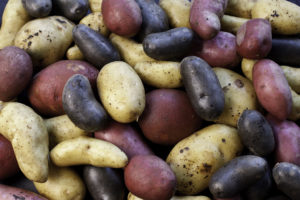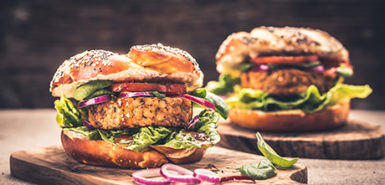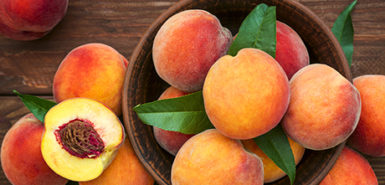
Pity the poor potato.
It’s been maligned for years as just another empty starch or, worse, as the raw ingredient of questionable foods like chips and fries.
That’s a shame, since spuds are actually nutrition superstars.
“Potatoes are an amazing food,” said Holly Dykstra, RD, a cardiovascular dietitian in preventive cardiology and rehab at Spectrum Health.
“They’re one of the best sources of potassium and have lots of fiber and vitamin C, as well as protein,” she said.
Best of all are the things potatoes don’t have—such as fat and sodium.
Dykstra likes to think of the versatile potato as a blank canvas for many great meals. However, she said people often mistakenly blame potatoes for health concerns or weight gain, when the real problem is likely the high-fat add-ons. (Yes, butter, cheese and sour cream—we’re looking at you.)
It’s all led to potatoes falling from favor, at least from a whole-food perspective.
While they continue to be the most commonly grown and eaten vegetable in the country, consumption of fresh potatoes in the U.S. has fallen by 50% in the last 50 years, according to the U.S. Department of Agriculture.
Yet the appetite for processed potatoes—in foods such as french fries, chips and hash browns—has risen by two-thirds in the same period.
Potatoes by the numbers
Calculating just how nutritious potatoes are can be a little tricky since they range considerably in size, from those adorable little fingerlings to the massive spuds served in steakhouses.
One medium-sized potato, typically 2 to 3 inches in diameter, packs about 110 calories. It contains roughly 30% of the day’s recommended allowance for vitamin C.
It also contributes about 25% of the daily allowance for potassium, a nutrient known to lower the risk of hypertension and stroke. That’s twice as much as a banana.
And it’s a good source of vitamin B6.
Potatoes even offer 4 grams of protein, compared to 6 grams for an egg.
When eaten with the skin, spuds add 2 grams of fiber to any meal. That’s important because so many of us skimp on fiber, elevating the risk of some cancers, Dykstra said.
“Plus, foods high in fiber make us feel full longer, so we’re less likely to overeat,” she said.
All those virtues, however, pale in comparison to the main reason potatoes rock.
“They’re so versatile that almost everyone likes them,” she said.
How to pick ‘em
While mainstream Americans may be spurning the spud as a dinner vegetable, food adventurers know there’s been a renaissance underway for some time.
More than 200 varieties of potato are available in the U.S., ranging from tiny purple ones to the Russets many people prefer for baking.
Dykstra also loves sweet potatoes, which provide a walloping 100% of the recommended daily allowance of vitamin A.
“While they offer a slightly different profile of nutrients, they’re just as versatile—and delicious,” Dykstra said.
She suggests experimenting, both with potato types and recipes.
“I love them baked, and top them with a wide variety of vegetables and spices,” Dykstra said. “And I adore them roasted, especially with other root vegetables, like onions, parsnips, beets or sweet potatoes.”
For seasoning, she likes to add rosemary, cumin or chili powder.
“With high-flavor recipes, it’s easier to cook with just small amounts of fats.”
When shopping for spuds, look for those that are clean and free of blemishes or cuts.
And give some thought about where to keep them. “When stored properly, they last for a long time—and that’s a win, compared to so many vegetables which have to be eaten quickly,” Dykstra said.
Keep potatoes in a cool place, with a temperature between 45 and 55 degrees—ideally in a perforated plastic or paper bag. Refrigerating them isn’t a good idea because it can cause the starch to convert to sugar and cause discoloration when cooked.
And they need to be out of direct sunlight. Otherwise, they can develop a greenish sheen caused by solanine, which is bitter and—in large enough quantities—even toxic.
If that happens, simply pare away the green parts and look for a darker spot for storage.
Ditto for the sprouts that sometimes emerge. That’s just the potato wanting to grow, and it won’t affect nutrition.
Finally, even though potatoes and onions both require similar storage conditions, keep them away from each other. Onions emit a gas that causes potatoes to ripen, sprout and eventually spoil.
 /a>
/a>
 /a>
/a>
 /a>
/a>
Thanks for sharing this information. I just want to let you know that I just check out your site and I find it very enjoyable and informative. I’d really like to help appreciate the efforts you get with writing this post.